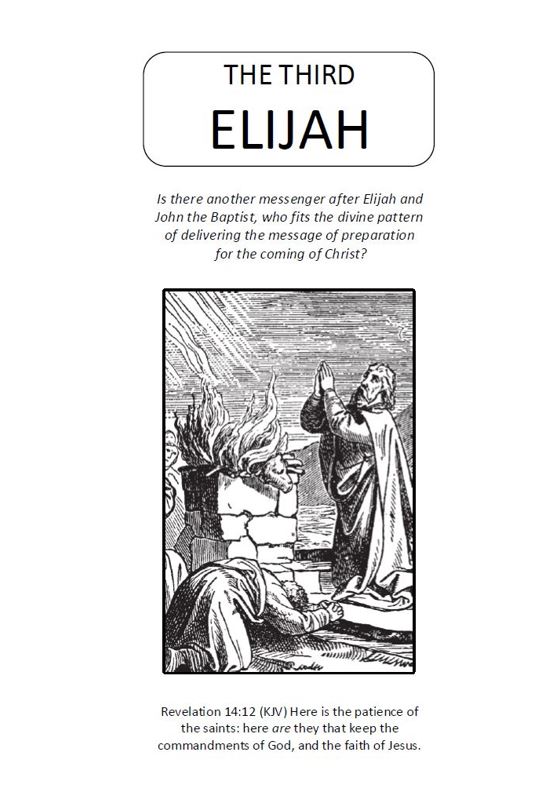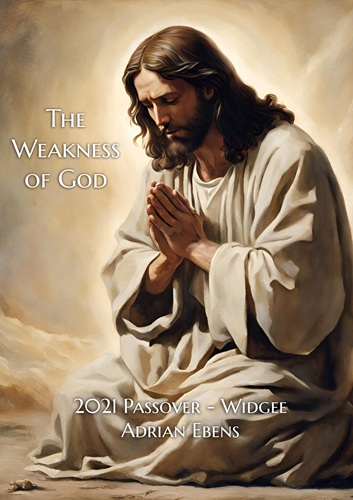J. N. Loughborogh quotes Summerbell
Most SDA’s who have studied the Pioneers writings about the Trinity are familiar with J. N. Loughborough’s article in 1861. What is NOT common knowledge among SDA non-Trinitarians is that Loughborough borrowed some of his non-Trinitarian arguments from the prominent “Christian Connection” minister Nicholas Summerbell (here for book). This fact is further evidence that even SDA’s who were NOT prior members of the Christian Connection church, were still familiar with many of their writings.
General Conference archivist and church historian Bert Haloviak wrote a good article how the Christian Connexion church shaped much of early Adventism. Haloviak’s research is referenced also by Gerald Wheeler.
I am sure there are some who would like to believe that the early SDA’s developed all their doctrines through direct revelation, and inspiration with no outside influences. Also, that no other church or group has ever believed similarly. Yet, the genealogist knows that no-one is born from no-body. Likewise, the religious historian realizes that there is hardly any religious thought that has NOT been pondered, discussed, and proclaimed by someone of a previous generation. Appreciating this fact does not lessen our value of truth; it only serves to strengthen it.
Lastly, Loughborogh’s article is “another” example of how modern SDA scholars mistakedly think the Pioneers were confused about the true understanding of Trinitarianism. In 2006, Associate Director of the Biblical Research Institute Gerhard Pfandle wrote an article (primarily a rebuttal of “Holland 1995, No new leaders…No new Gods), entitled “The Doctrine of the Trinity among Seventh day Adventists." Pfandle says: “Furthermore, we must note that some of their [early SDA’s] views as to what was involved in the Trinity were erroneous, e.g., they thought the Trinity was three persons in one person,53 or that Jesus and the Father were one and the same.54”
Proffesser Pfandle’s examples are from the same 1861 J. N. Loughborough article, and from the famous Joseph Bates quotation (from “Life Inccidents“). The point is simply: Anyone who reads even a little from the mass amount of Christian Connection refutations of Trinitarianism, understands immediately that THEY ARE NOT CONFUSED OR IGNORANT ABOUT THE VARIOUS VERSIONS AND EXPLANATIONS OF THE SAME. They debated the subject by voice and pen with the ablest Trinitarian thinkers for many decades. Any early SDA who wrote AGAINST Trinitarianism, had already read much, if not MOST of the Christian Connection arguments against the same. It is the modern SDA scholars and historians WHO HAVE NOT READ the Christian Connection arguments against Trinitarianism. This is another evidence dispelling the myth that the early SDA’s were simply “confused” and “ignorant” of what they were talking about. They did NOT confound creedal Trinitarianism with monarchian modalism. Those who differ toward tri-theism always interpret history, and creeds through "three divine beings" glasses.
For those not familiar with J. N. Loughborough’s article, here it is.
J. N. Loughborough: 1832 - 1924
Questions for Bro. Loughborough
BRO. WHITE: The following questions I would like to have you give, or send, to Bro. Loughborough for explanation. W. W. Giles. Toledo, Ohio.
QUESTION 1. What serious objection is there to the doctrine of the Trinity?
ANSWER. There are many objections which we might urge, but on account of our limited space we shall reduce them to the three following: 1. It is contrary to common sense. 2. It is contrary to scripture. 3. Its origin is Pagan and fabulous. These positions we will remark upon briefly in their order.
1. It is not very consonant with common sense to talk of three being one, and one being three. Or as some express it, calling God “the Triune God,” or “the three-one-God.” If Father, Son, and Holy Ghost are each God, it would be three Gods; for three times one is not one, but three. There is a sense in which they are one, but not one person, as claimed by Trinitarians.
2. It is contrary to Scripture. Almost any portion of the New Testament we may open which has occasion to speak of the Father and Son, represents them as two distinct persons. The seventeenth chapter of John is alone sufficient to refute the doctrine of the Trinity. Over forty times in that one chapter Christ speaks of his Father as a person distinct from himself. His Father was in heaven and he upon earth. The Father had sent him. Given to him those that believed. He was then to go to the Father. And in this very testimony he shows us in what consists the oneness of the Father and Son. It is the same as the oneness of the members of Christ’s church. “That they all may be one; as thou, Father, art in me, and I in thee, that they also may be one in us; that the world may believe that thou hast sent me. And the glory which thou gavest me I have given them; that they may be one, even as we are one.” Of one heart and one mind. Of one purpose in all the plan devised for man’s salvation. Read the seventeenth chapter of John, and see if it does not completely upset the doctrine of the Trinity.
To believe that doctrine, when reading the scripture we must believe that God sent himself into the world, died to reconcile the world to himself, raised himself from the dead, ascended to himself in heaven, pleads before himself in heaven to reconcile the world to himself, and is the only mediator between man and himself. It will not do to substitute the human nature of Christ (according to Trinitarians) as the Mediator; for Clarke says, “Human blood can no more appease God than swine’s blood.” Com. on 2 Sam. 21:10. We must believe also that in the garden God prayed to himself, if it were possible, to let the cup pass from himself, and a thousand other such absurdities.
Read carefully the following texts, comparing them with the idea that Christ is the Omnipotent, Omnipresent, Supreme, and only self-existent God: John 14:28; 17:3; 3:16; 5:19, 26; 11:15; 20:19; 8:50; 6:38; Mark 8:32; Luke 6:12; 22:69; 24:29; Matt. 3:17; 27:46; Gal. 3:20; 1 John 2:1; Rev. 5:7; Acts 17:31. Also see Matt. 11:25, 27; Luke 1:32; 22:42; John 3:35, 36; 5:19, 21, 22, 23, 25, 26; 6:40; 8:35, 36; 14:13; 1 Cor. 15:28, &c.
The word Trinity nowhere occurs in the Scriptures. The principal text supposed to teach it is 1 John 5:7, which is an interpolation. Clarke says, “Out of one hundred and thirteen manuscripts, the text is wanting in one hundred and twelve. It occurs in no MS. before the tenth century. And the first place the text occurs in Greek, is in the Greek translation of the acts of the Council of Lateran, held A. D. 1215.”—Com. on 1 John 5, and remarks at close of chap.
3. Its origin is pagan and fabulous. Instead of pointing us to scripture for proof of the trinity, we are pointed to the trident of the Persians, with the assertion that “by this they designed to teach the idea of a trinity, and if they had the doctrine of the trinity, they must have received it by tradition from the people of God. But this is all assumed, for it is certain that the Jewish church held to no such doctrine. Says Mr. Summerbell, “A friend of mine who was present in a New York synagogue, asked the Rabbi for an explanation of the word ‘Elohim’. A Trinitarian clergyman who stood by, replied, ‘Why, that has reference to the three persons in the Trinity,’ when a Jew stepped forward and said he must not mention that word again, or they would have to compel him to leave the house; for it was not permitted to mention the name of any strange god in the synagogue.” (Discussion between Summerbell and Flood on Trinity, p. 38) Milman says the idea of the Trident is fabulous. (Hist. Christianity, p. 34)
This doctrine of the trinity was brought into the church about the same time with image worship, and keeping the day of the sun, and is but Persian doctrine remodeled. It occupied about three hundred years from its introduction to bring the doctrine to what it is now. It was commenced about 325 A. D., and was not completed till 681. See Milman’s Gibbon’s Rome, vol. 4, p. 422. It was adopted in Spain in 589, in England in 596, in Africa in 534.—Gib. vol. 4, pp. 114, 345; Milner, vol. 1, p. 519. (To be continued.) (J. N. Loughborough, November 5, 1861, Review & Herald, vol. 18, page 184, par. 1-11)



